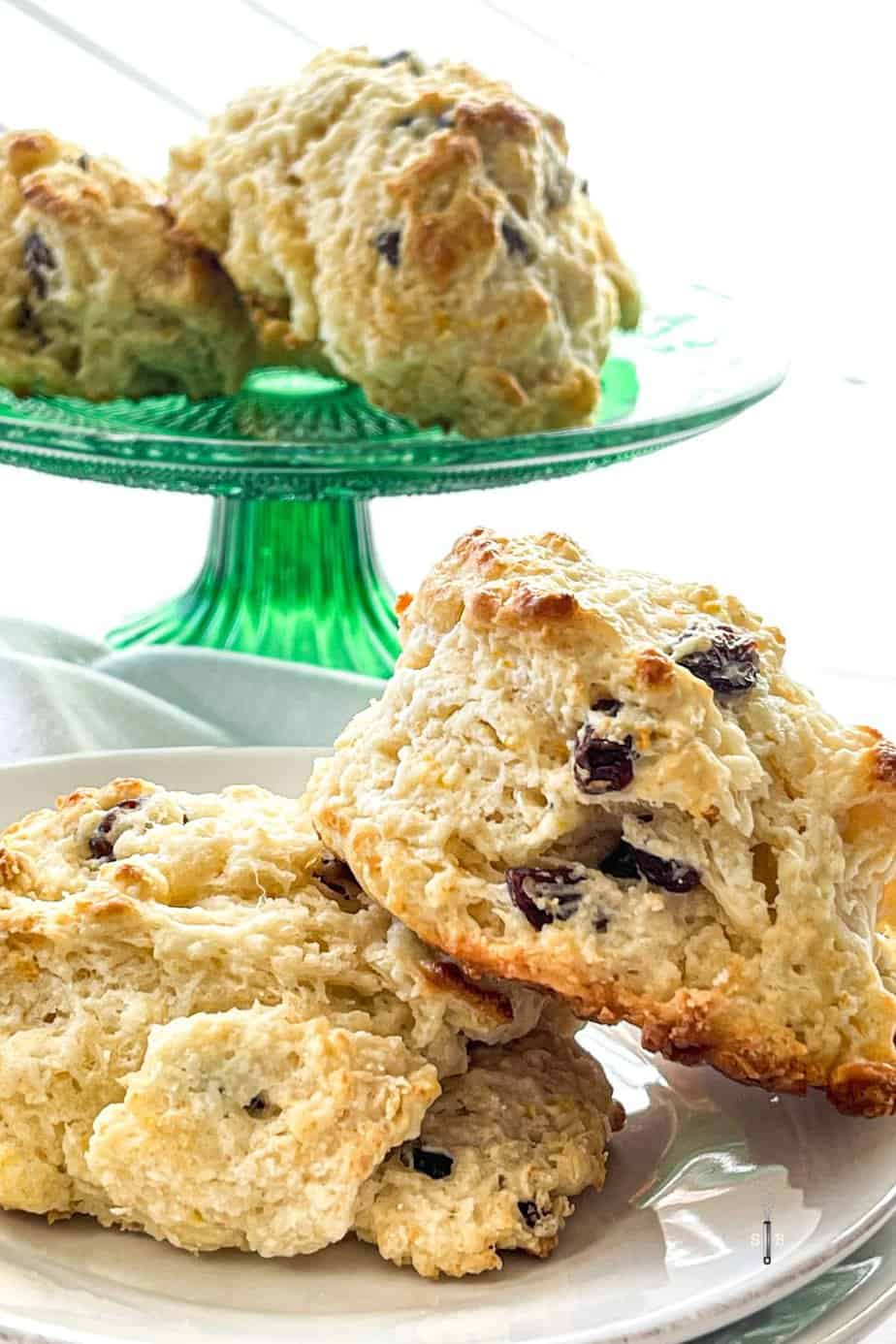(I didn't know where to put this - I'm open to suggestions!)
I love Irish soda bread, but have only made it a couple of times, since I just want a slice or two. I found this recipe to try so I can easily share with my friends.
I've never made scones. Not sure I've ever eaten one, so I didn't know what to expect. Pretty easy, except for the workout I got cutting a stick of cold butter into the dry ingredients with a pastry blender.
They are delicious! Kind of crunchy on the outside, light and fluffy on the inside. Love 'em!
Can't wait to make blueberry scones when the berries come in to season!
Now I've got to figure out what to do with the rest of the quart of buttermilk.
Lee



 thesconeblog.com
thesconeblog.com
Irish Soda Bread Scones
Ingredients
In the flour mixture, cut in cold butter with a pastry blender or two knives until it resembles coarse crumbs. You should see lumps of butter and that is exactly what you want.
With a rubber spatula or wooden spoon, stir in buttermilk and vanilla extract until just moistened.
Add raisins.
On a lightly floured surface, knead gently 5 to 10 times until it creates a shaggy dough.
With a 1/3 cup measuring cup or cookie scoop, scoop out the dough and place the mound on the prepared baking sheet 2 inches apart. You should have 6-8 scones. With a sharp knife or bench scraper, cut a small x into the top of the scone dough.
With a pastry brush, brush the top of the scones with 1 tablespoon of buttermilk, and sprinkle each top with sugar for a little extra sweetness.
Place scones in the oven on the middle rack.
Bake until golden brown, which is about 15-20 minutes.
Cool on a wire rack.
I love Irish soda bread, but have only made it a couple of times, since I just want a slice or two. I found this recipe to try so I can easily share with my friends.
I've never made scones. Not sure I've ever eaten one, so I didn't know what to expect. Pretty easy, except for the workout I got cutting a stick of cold butter into the dry ingredients with a pastry blender.
They are delicious! Kind of crunchy on the outside, light and fluffy on the inside. Love 'em!
Can't wait to make blueberry scones when the berries come in to season!
Now I've got to figure out what to do with the rest of the quart of buttermilk.
Lee

Irish Soda Bread Scones Recipe
A spin on the traditional Irish soda bread, these scones have a crispy golden crust, raisins, and orange zest! Tastes like your favorite Irish soda bread to St. Patrick's Day festivities.
 thesconeblog.com
thesconeblog.com
Irish Soda Bread Scones
Ingredients
- 2 cups all-purpose flour
- 2 teaspoons baking powder
- 1/4 teaspoon baking soda
- 5 tablespoons sugar
- 1/2 teaspoon salt
- 1 stick cold butter
- 1/2 cup raisins
- 1 teaspoon orange zest
- 1 cup buttermilk, plus 1 tablespoon
- 1 teaspoon vanilla extract
- Preheat oven to 425 degrees
In the flour mixture, cut in cold butter with a pastry blender or two knives until it resembles coarse crumbs. You should see lumps of butter and that is exactly what you want.
With a rubber spatula or wooden spoon, stir in buttermilk and vanilla extract until just moistened.
Add raisins.
On a lightly floured surface, knead gently 5 to 10 times until it creates a shaggy dough.
With a 1/3 cup measuring cup or cookie scoop, scoop out the dough and place the mound on the prepared baking sheet 2 inches apart. You should have 6-8 scones. With a sharp knife or bench scraper, cut a small x into the top of the scone dough.
With a pastry brush, brush the top of the scones with 1 tablespoon of buttermilk, and sprinkle each top with sugar for a little extra sweetness.
Place scones in the oven on the middle rack.
Bake until golden brown, which is about 15-20 minutes.
Cool on a wire rack.

:max_bytes(150000):strip_icc()/irish-soda-bread-FT-RECIPE0325-d23f9d5bff7d442aae677db5b0c559ff.jpg)
